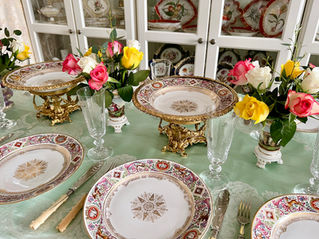

The mysterious "Blue V"
A porcelain collector loves a good mystery. And lucky for collectors of British porcelain - there is an endless supply of mysteries! It...


Dine like a King
If you think your home is full when your family visits for a Sunday walk and a dinner, think about King Louis Philippe, who reigned over...


A nose for the rose
It's going to be Valentine's Day... so this week we need to do something beautiful and romantic... Let's look at some roses! One of the...


Gilding on acid
The Minton factory was responsible for a huge uplift in the quality of British porcelain during the mid to late 19th Century. They...




































